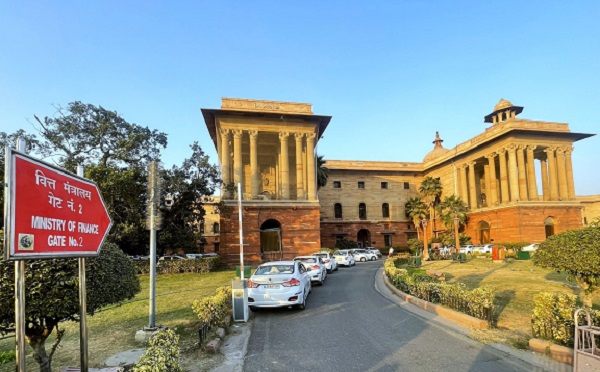.png)

Srinivasa Rao, ex-Economic Advisor at Finance Ministry, spent 28 years in IES, and now heads strategy at Bajaj Finserv.
March 13, 2025 at 11:45 AM IST
The Goods and Services Tax was introduced to create a unified national market by replacing multiple indirect taxes with a single levy, eliminating the complexities of the previous VAT regime. Implemented in July 2017, it gave a major fillip to domestic trade by simplifying internal commerce and broadening the tax base.
India’s GST collections surpassed ₹20.14 trillion in 2023-24, reflecting the economy’s resilience and the tax’s effectiveness across states. So far 2024-25, gross GST collection stood at ₹20.13 trillion.
Despite contributing to higher tax revenues for both the Centre and states, the anticipated windfall has not materialised. GST revenue as a share of GDP has not consistently exceeded pre-GST levels. Only now, after seven years, have revenues marginally surpassed those from VAT and other indirect taxes. Tax buoyancy has not improved dramatically.
States benefited significantly from a compensation mechanism funded through a cess, which guaranteed revenue irrespective of actual GST collections. This windfall for states came at a cost to the Union government, with estimates suggesting a loss of nearly 1% of GDP. States, on average, gained between 0.2% and 0.5% of GDP. The gains were not evenly distributed. Slower-growing states benefited the most, receiving larger transfers through the compensation mechanism. With the compensation coming to an end, states began to see a shortfall from 2023-24 onwards.
The GST Council must now decide on the future of the compensation cess. One option is to abolish it, though this is unlikely given that it is levied on demerit goods and contributes nearly 8% of total GST revenues. A more viable approach is to integrate the cess into the regular rate structure, ensuring that both the Union and states share revenues equally. This would alter the distribution among states, shifting it from shortfall-based allocations to consumption-based revenue sharing. Higher-income states with greater spending on luxury and demerit goods such as automobiles, tobacco, and aerated drinks would contribute more to cess collections.
A study by economists Varun Agarwal, Arvind Subramanian, and Josh Felman suggests that if the cess is absorbed into the GST structure, the biggest beneficiaries would be poorer states. Since GST is consumption-based, revenue flows would favour more populous, lower-income states.
The GST framework has now reached a stage where further reforms are essential to fully realise its potential. The GST Council is considering an overhaul to simplify compliance, rationalise rates, and enhance efficiency. The Finance Bill 2025 laid the groundwork for this transition with changes aimed at streamlining tax administration and regulatory oversight. Among the key amendments is allowing input service distributors to distribute input tax credit on interstate supplies where tax is payable under the reverse charge mechanism. This brings much-needed clarity to credit distribution.
A major reform under discussion is the introduction of faceless assessments and a vendor compliance rating system. Faceless assessments would enhance transparency in tax administration, reducing discretion and scope for disputes. The vendor rating system would allow businesses to assess suppliers’ tax compliance, strengthening supply chain accountability.
Industry players are also pushing for greater use of GST data to unlock business insights. Access to this data would help businesses and policymakers make more informed decisions, leading to more effective economic policies. The launch of quick-turnaround loans for small businesses by SIDBI is one example of how GST data can be leveraged for credit assessment.
GST has sustained government revenues even as rates have been lowered on several goods and services, benefiting consumers. The post-pandemic recovery, skewed towards higher-taxed goods, has helped sustain collections despite slowing consumption growth.
Most states have gained from GST. The biggest transformation has been the shift from excise-heavy revenues collected by richer, producing states to consumption-based collections that benefit lower-income states. Uttar Pradesh, Bihar, Madhya Pradesh, and Rajasthan are now among the largest recipients of GST revenues, unlike in the pre-GST era.
Replacing a production-based tax system with a consumption-driven model has been a significant shift, largely favouring poorer states. The GST system has now reached a critical stage where further reforms are necessary. If the GST Council moves decisively, the tax system could become an even more effective driver of economic growth, helping India and its states reach the five trillion-dollar milestone sooner than 2029.




